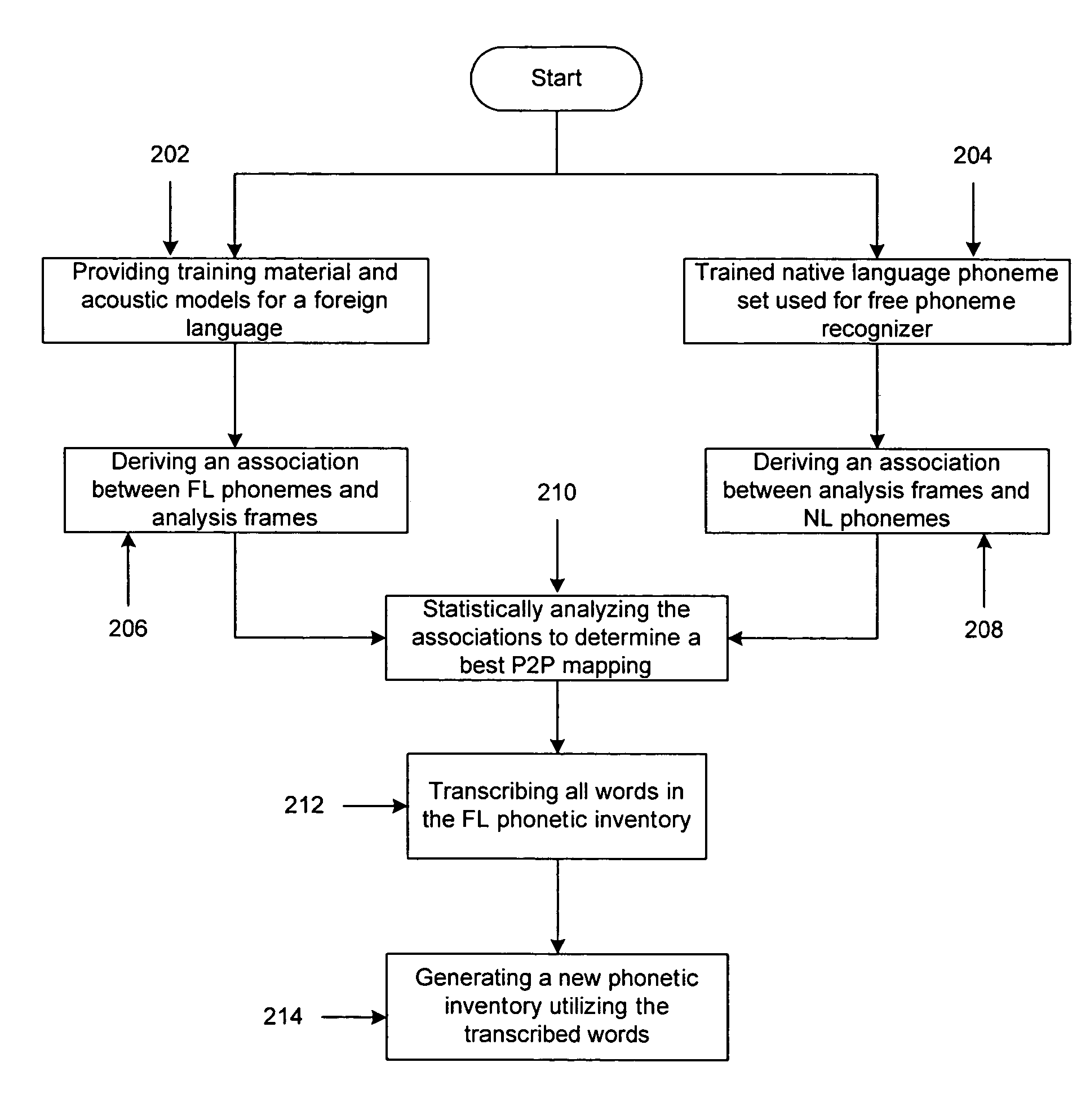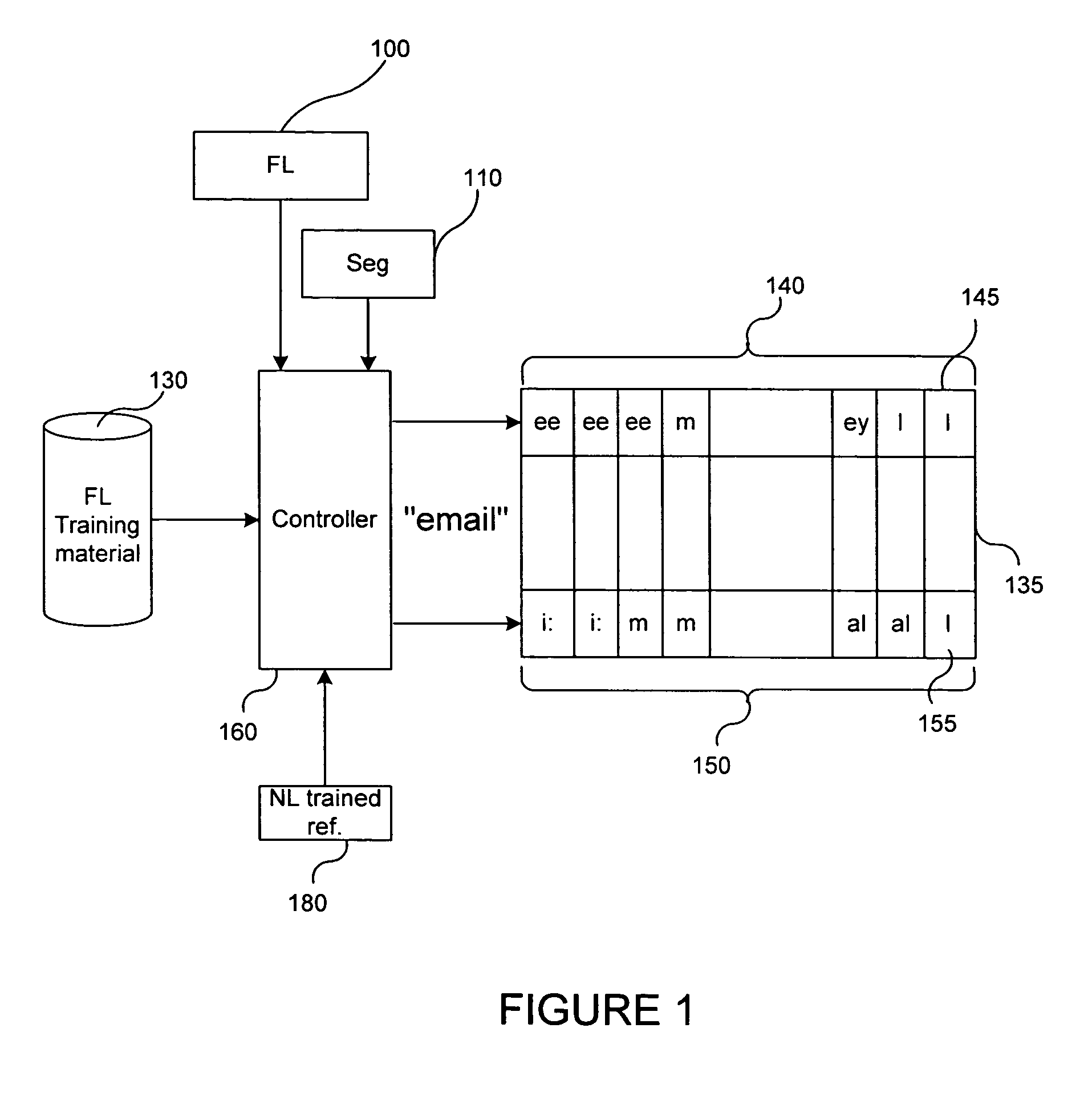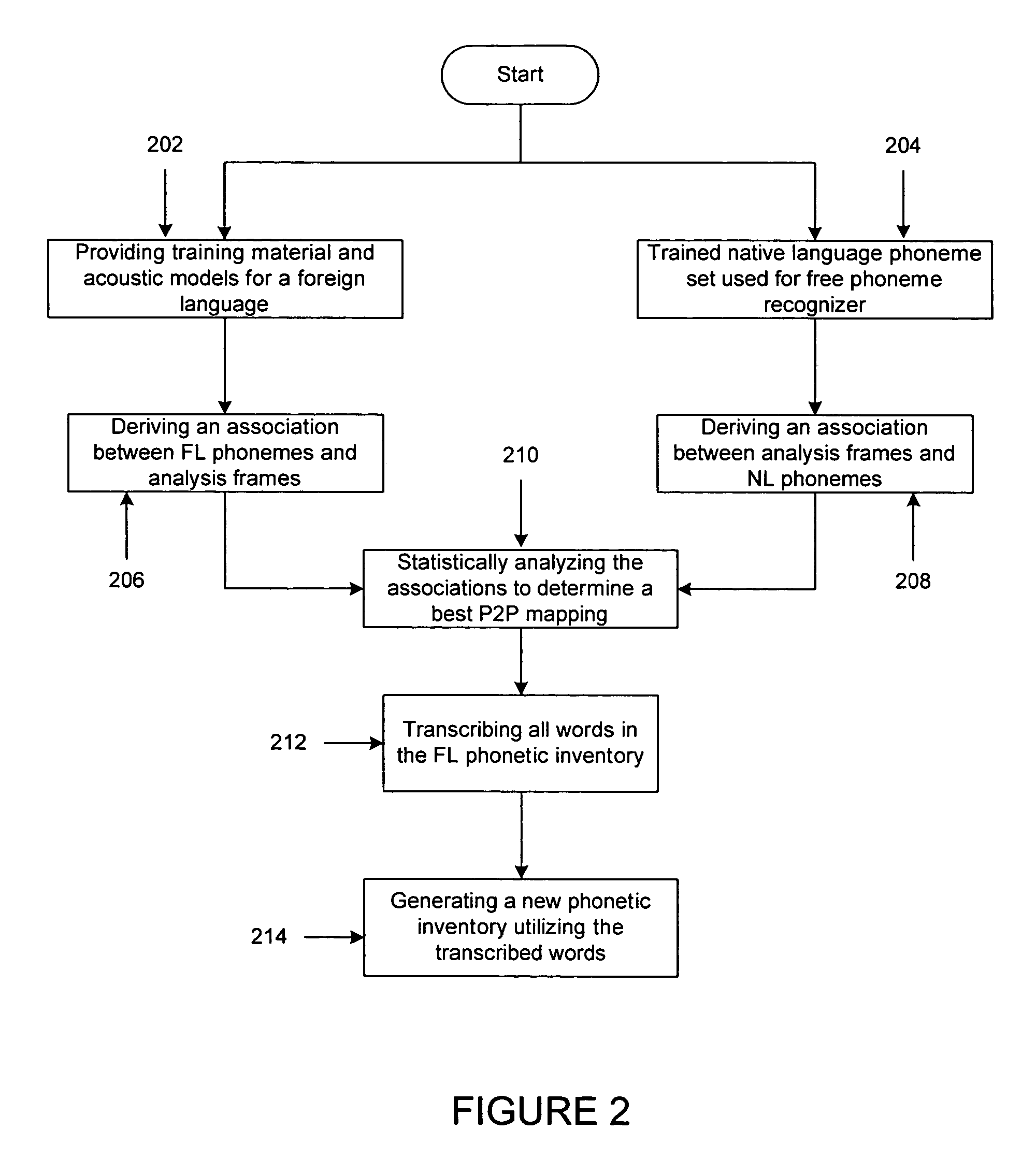Method and apparatus for generating acoustic models for speaker independent speech recognition of foreign words uttered by non-native speakers
a non-native speaker and speaker technology, applied in the field of speech recognition apparatus and methods, can solve the problems of low recognition performance even if uttered by fl speakers, less accurate modeling of words, and high cost of recording such a speech database for every language one wants to suppor
- Summary
- Abstract
- Description
- Claims
- Application Information
AI Technical Summary
Benefits of technology
Problems solved by technology
Method used
Image
Examples
Embodiment Construction
[0017]FIGS. 1 and 2, discussed below, and the various embodiments used to describe the principles of the present invention in this patent document are by way of illustration only and should not be construed in any way to limit the scope of the invention. Those skilled in the art will understand that the principles of the present invention may be implemented in any suitably arranged speech recognition system.
[0018]FIG. 1 depicts a high-level block diagram of a phoneme-to-phoneme mapping system in accordance with a preferred embodiment of the present invention. Database 130 (FL training material) contains recorded utterances, pursuant transliterations and a phonetic lexicon for a foreign language. Database (FL) 100 contains trained acoustic models of this same foreign language. These models can be used to derive a time alignment between FL phonemes and analysis frames for the utterances from database 130. Usually such a time alignment is the byproduct of a phoneme-based training algor...
PUM
 Login to View More
Login to View More Abstract
Description
Claims
Application Information
 Login to View More
Login to View More - R&D
- Intellectual Property
- Life Sciences
- Materials
- Tech Scout
- Unparalleled Data Quality
- Higher Quality Content
- 60% Fewer Hallucinations
Browse by: Latest US Patents, China's latest patents, Technical Efficacy Thesaurus, Application Domain, Technology Topic, Popular Technical Reports.
© 2025 PatSnap. All rights reserved.Legal|Privacy policy|Modern Slavery Act Transparency Statement|Sitemap|About US| Contact US: help@patsnap.com



